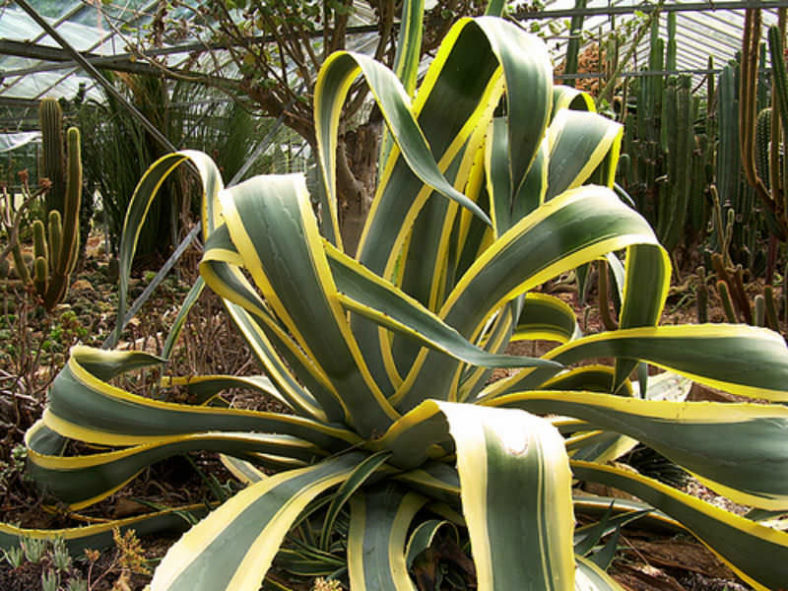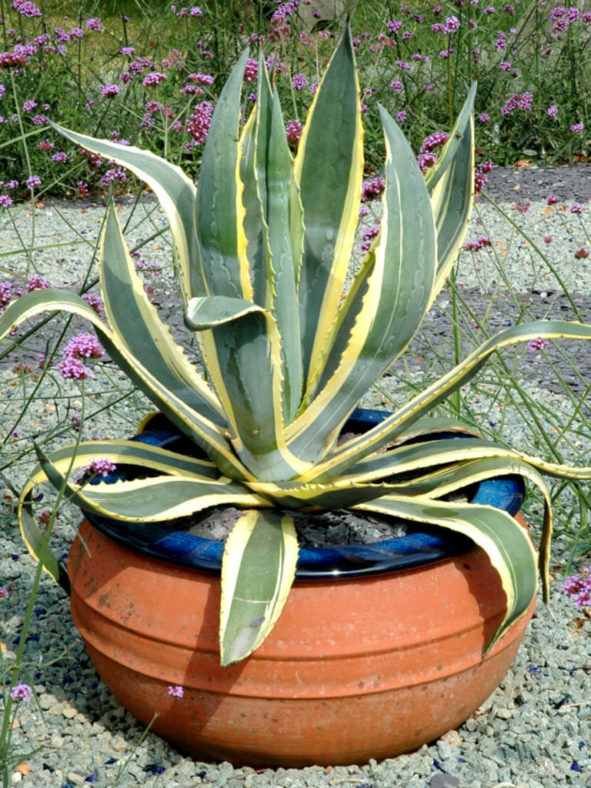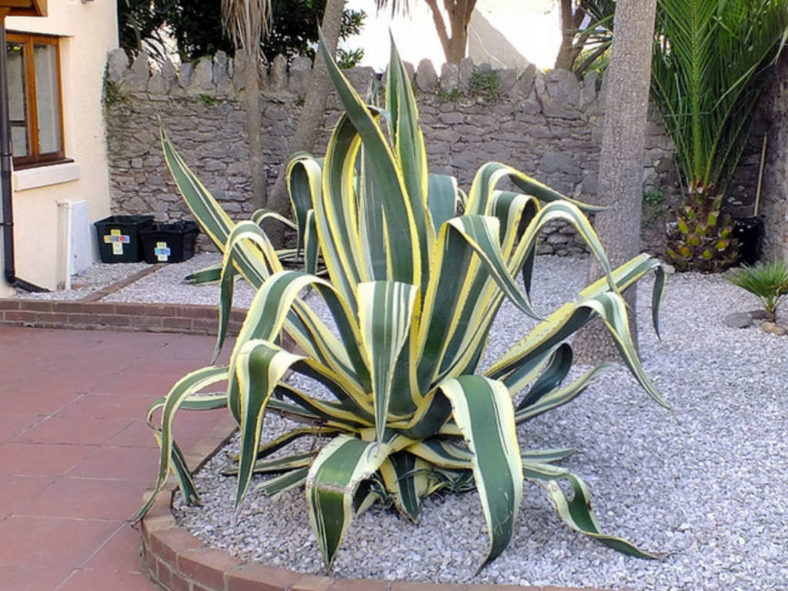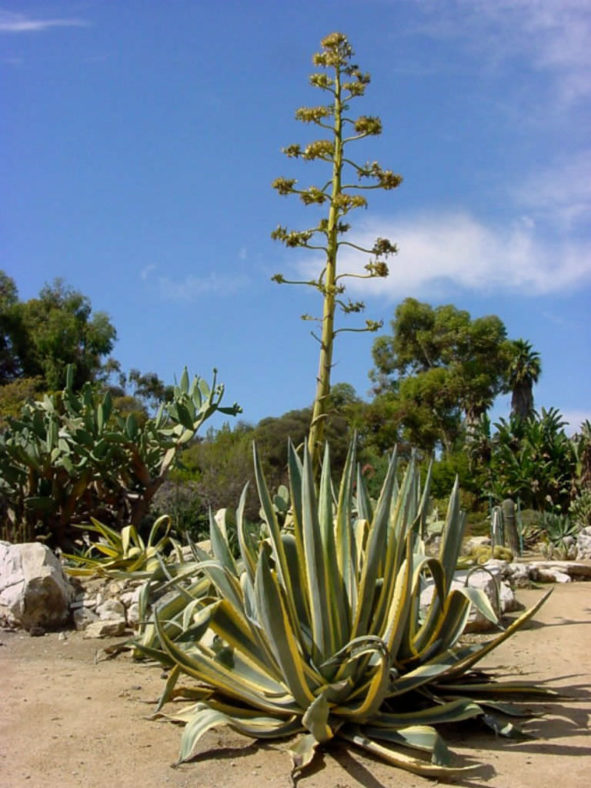Scientific Name
Agave americana 'Marginata'
Common Name(s)
Yellow Margin Century Plant, Variegated Agave, Variegated Century Plant
Synonym(s)
Agave americana f. aureo-marginata, Agave americana var. marginata, Agave americana var. marginata 'Aurea'
Scientific Classification
Family: Asparagaceae
Subfamily: Agavoideae
Genus: Agave
Origin
The origin of this variegated cultivar of Agave americana is unknown.
Description
Agave americana 'Marginata' is a beautiful large succulent that forms slowly clumping rosettes of gray-green leaves with cream to yellow stripes along the margins. The rosettes can reach up to 6 feet (1.8 m) in height and 8 feet (2.4 m) in diameter. The leaves arch and curl and have sharp marginal spines and a dark brown terminal spine. They can grow up to 5 feet (1.5 m) long and 10 inches (25 cm) wide.
The flowers are yellow or greenish-yellow and appear in panicles at the branch ends, measuring up to 4 inches (10 cm) long. The rosette does not bloom until several decades old and dies after flowering.
Agave americana 'Marginata' is sometimes referred to as Agave americana 'Variegata'.

How to Grow and Care for Agave americana 'Marginata'
Light: These plants require full sun to part shade. If you are growing Agaves indoors, choose a bright, sunny window with as much sun as possible. Agave plants love going outside from spring to fall.
Soil: Agaves will tolerate most soils as long as they have good drainage but prefer sandy or rocky soil.
Hardiness: Agave americana 'Marginata' can withstand temperatures as low as 10 to 50 °F (-12.2 to 10 °C), USDA hardiness zones 8a to 11b.
Watering: Mature plants are very drought tolerant. From spring to fall, water thoroughly your Agave when the soil mix becomes dry. In winter, water sparingly about once a month. Plants in containers require more frequent watering than those in the ground.
Fertilizing: Give your Agaves a small amount of fertilizer in the spring during the first two years.
Repotting: When the pot becomes full of roots, it has become pot-bound. If you notice your Agave becoming pot-bound, repot it with new soil in a pot slightly larger than the old one.
Propagation: Since it can take years to produce seeds, Agaves are usually propagated by offsets.
Learn more at How to Grow and Care for Agave.
Toxicity of Agave americana 'Marginata'
Agave americana 'Marginata' is not toxic to humans but can be mildly poisonous to children and pets.
Links
- Back to genus Agave
- Succupedia: Browse succulents by Scientific Name, Common Name, Genus, Family, USDA Hardiness Zone, Origin, or cacti by Genus
Photo Gallery
Click on a photo to see a larger version.


